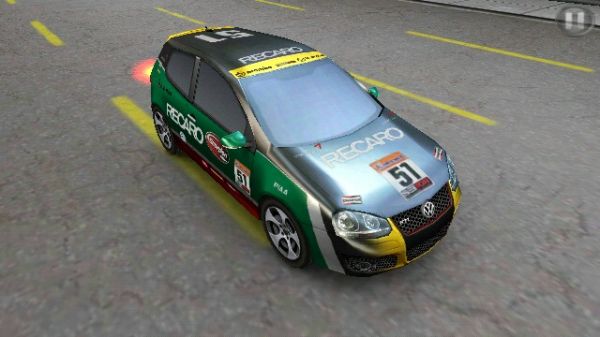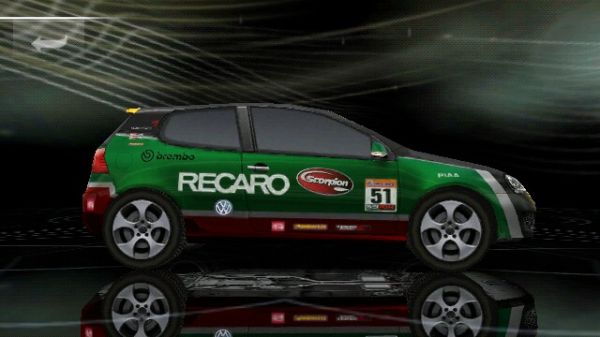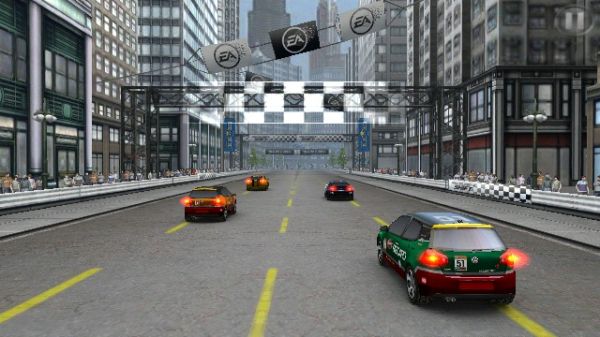Nokia N8 Review: Nokia's New Flagship
by Mithun Chandrasekhar on January 12, 2011 1:00 AM EST- Posted in
- Smartphones
- Nokia
- N8
- Symbian
- Mobile
Look who’s calling the shots…
The N8 represents many firsts for Nokia. It is the first phone to be based on the Symbian^3 platform. It is the first Nokia phone to carry a 12MP camera sensor. It is also the first Nokia phone to have a discrete GPU. And finally, it is the first mainstream Nokia phone to be multi-touch capable (and just the 2nd to have a capacitive screen) and have a GPU accelerated UI, both of which are as a result of switching to Symbian^3. And when it comes to the display and what’s driving it, the Nokia N8 doesn’t disappoint.


NFS Shift HD running on the BMC2727 in the Nokia N8
While I’ll get to the biggest change in the N8 that is the Symbian^3 OS in a while, Nokia has also updated what’s calling the shots behind the scenes. Up until Symbian^3 came along, Nokia rarely ever bothered with including a GPU in its phones and even when it did, it was never really put to any good use. Its last N-Series flagship, the N97, didn’t even have a GPU per se. Except for the Cortex A8-touting outlier that the N900 is, the best that Nokia has done in terms of integrating GPU’s into phones is make use of the OMAP 2420 SoC, which included a PowerVR MBX GPU, in a handful of its previous devices and even this was left mostly unutilized. Things have changed, for the better, with the Nokia N8. Although Nokia is still sticking with a tried and tested ARM 11 implementation for its CPU, it has actually gone ahead and made full use of a discrete Broadcom BCM2727 Multimedia processor for graphic duties. While you can see performance numbers later in the review, the general impression is that it is fairly competent as a GPU.
Nokia’s choice of using an aged ARM 11 implementation, down-clocked to 680 Mhz (instead of the spec’d 772 Mhz) for its CPU may draw criticism in this day and age of gigahertz-capable, multi-core mobile SoC’s. But digging a little deeper seems to show that there may be some method to this madness. You see, pretty much everything in the N8 runs around the BCM2727 media processor. I would hazard a calculated guess that apart from lightweight low-level OS functions and interfacing with the baseband and other radio’s, there isn’t much else for the CPU to do on the N8. Plus, Symbian’s inherently efficient use of available resources helps too.
So what was needed in this case was a low-power, package efficient CPU design that could just about get the job done while sipping as little power and occupying as little space as possible. And this is almost exactly what Nokia found in the Samsung K5WXXXXXXX series of Fusion Memory MCP’s. This MCP (Multi Chip Package) allows Samsung to stack different memory types (DDR, NAND etc.) along with non-memory logic in the same low-power package. So for basically the same footprint as a single memory chip, Samsung is able to integrate the DDR memory (256MB), NAND (512MB) and a CPU (TI ARM11 applications processor).
Most of the heavy lifting in the N8 is done by the BCM2727, as it renders the Symbian^3 UI and games alike, works with the camera module to capture and process 12MP stills and 720p videos, encodes/decodes those videos, drives the HDMI output (upto 720p) and even decodes the audio. So in case of the N8 and Symbian^3, it made sense for Nokia to have a low-power ARM11 CPU coupled with a reasonably powerful and competent multimedia processor. Using an A8 Cortex-based 1Ghz+ part here to run Symbian^3 would have been overkill and power-inefficient. And this decision is quite obvious when you use the N8. The UI is very fluid and responsive with crisp transitions and swift app switching. Furthermore, the N8 posted very competitive battery life numbers to further substantiate Nokia’s decision here.












119 Comments
View All Comments
codedivine - Sunday, January 16, 2011 - link
Hi, I got a score of 8995 on a Nokia N8. Were you running Opera 10.1 or were you running Opera 10.0? I am running 10.1.Voldenuit - Sunday, January 16, 2011 - link
Good point.I ran Rightmark Browsermark on Opera 10.0 and got 5797 points.
I ran it again with Opera 10.1 and got 9790 points.
That's a 68% improvement!
NB: The Ovi store lists Opera 10.1 on its store but actually hosts 10.0. To get 10.1, I had to manually download it from Opera.com.
Voldenuit - Sunday, January 16, 2011 - link
Running Sunspider on Opera Mobile 10.1 netted me a result of 10,841ms, which is 10x faster than the 10.0 result and comparable to iPhone4 performance.Definitely worth updating the article to reflect this, as it greatly changes the performance perspective of the phone.
noxplague - Sunday, January 16, 2011 - link
Holy crap you are right! I've been using 10.0. I just trusted the OVI store. Nokia should really fix this.Thanks for sharing!
mythun.chandra - Monday, January 17, 2011 - link
I downloaded Opera Mobile "10.1" from the Ovi Store. After seeing codedivine's comment, I checked up and it is indeed version 10.0! Why Nokia would do something like this...I'm not sure.I will re-run the Opera Mobile tests and hopefully the numbers in the article should be updated soon enough.
Thank you for pointing this out! :)
mythun.chandra - Monday, January 17, 2011 - link
Updated! :)Voldenuit - Monday, January 17, 2011 - link
Nice.Perhaps you could update the title with an '(UPDATED)' tag so people who're curious can revisit the phone? I fear that the phone's reputation has been badly damaged by the initial results showing it at the bottom of the pack.
Voldenuit - Monday, January 17, 2011 - link
PS I still think there's something funny going on with the talk time and wifi throughput figures. codedivine once mentioned to me that he got 6.5 Mbps on his N8 over wifi, which was already saturating his connection.sumeetm90 - Sunday, January 16, 2011 - link
I have been using N8 for a month now and have discovered following pesky issues:1) You cant mark multiple messages in your inbox. If you want to delete say 10 messages in a go you need to individually delete them. (Dont understand how can nokia make such a blunder)
2) Cannot utilize full screen to view pdf documents in Adobe reader provided by nokia. This is really ridiculous. You are forced to use 75% of the available screen to read pdfs.
3) I was surprised to find that there was no stopwatch feature included with the new phone. Yes you can download an app but when I pay Indian rupees 23600 (approx $500) for a smartphone, I expect nokia to put a stopwatch/countdown timer in phone.
4) You need to download a scientific calculator. The default calculator is pretty lame and embarrassing. If you search the ovi store you will realise it is not so easy to download a scientific calculator.
I gotta agree with Mithun about the issues with browser, mail application and
Voldenuit - Sunday, January 16, 2011 - link
>"1) You cant mark multiple messages in your inbox. If you want to delete say 10 messages in a go you need to individually delete them. (Dont understand how can nokia make such a blunder)"You can indeed mark multiple messages in your inbox. Go to options, and select 'Mark'. You can now mark multiple messages by clicking on their headers in turn. You can also select 'Mark All' by selecting Options->Mark->Options->Mark All.
>"2) Cannot utilize full screen to view pdf documents in Adobe reader provided by nokia. This is really ridiculous. You are forced to use 75% of the available screen to read pdfs."
The PDF reader is not supplied by Nokia. It's a lite version by Quickoffice, which wants you to pay to get the full version with text reflow and fullscreen. Not great, but not nokia's fault.
Re: stopwatch and scicalc, they're available, not every phone comes with every app under the sun, either (and that's a good thing).